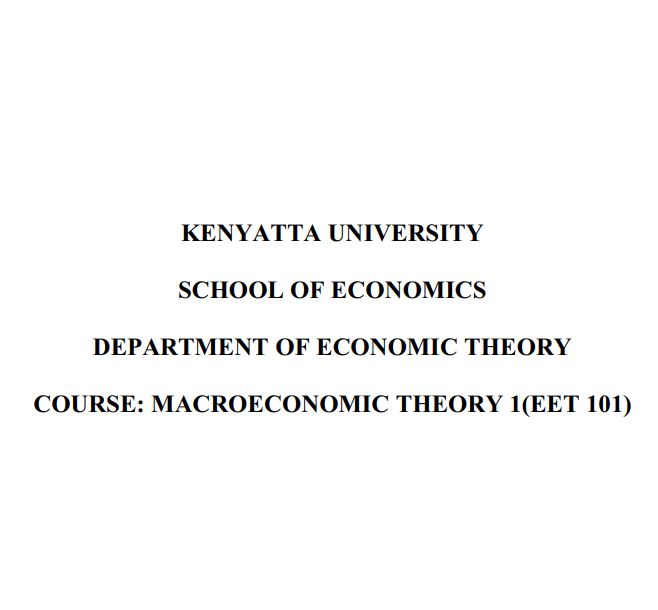
COURSE OUTLINE
- INTRODUCTION
- Definition of key terms
- Macroeconomic models
- Importance of Macroeconomics
- Major goals of macroeconomic policy
- Limitations of macroeconomics
- NATIONAL INCOME, OUTPUT AND EXPENDITURE
- The circular flow of income
- Three approaches to measurement of National income
- GDP and its related concepts
- Difficulties in measuring National income
- Factors determining size of an economy’s National Income
- Uses of National income accounting
- National income and social welfare
- CONSUMPTION, SAVINGS AND INVESTMENT
- The consumption function
- The savings function
- Theories of Consumption
- Determinants of Consumption Spending
- Types of Investments
- Determinants of Investment
- Theories of investment
- THE KEYNESSIAN MODEL OF INCOME DETERMINATION
(EQUILIBRIUM INCOME DETERMINATION)
- Equilibrium in the goods market
- The S = I equilibrium condition of the goods market
- The IS Equation and curve
- Dis-equilibrium Income
- The Multiplier concept
- Paradox of Thrift
- Inflationary and Deflationary Gaps3
- THE MONEY MARKET
- Money and its Basic Functions
- Properties of Money
- Creation of Money
- Financial Institutions
- Demand for Money
- Money supply
- Equilibrium in the money market
- General equilibrium
- Open economy and the extended IS-LM model
- FOREIGN EXCHANGE MARKETS
- Definitions
- Exchange rate regimes
- The J – Curve Phenomenon
- Methods used to correct trade deficit
- Effects of Devaluation of a Currency
- UNEMPLOYMENT AND INFLATION
Unemployment
- Definition
- Types of unemployment
- Causes of Unemployment
- Policies for curing Unemployment
Inflation
- Definitions
- Forms of Inflation
- Types of Inflation
- Measurement of Inflation
- Causes of Inflation
- Effects of Inflation
- Remedies of Inflation
(Visited 187 times, 1 visits today)
